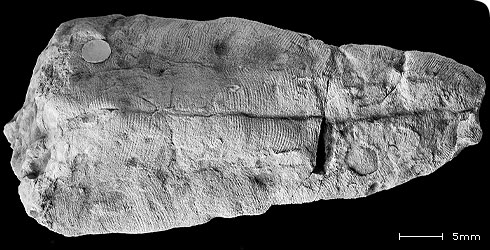Paraconularia subtilis
Paraconularia subtilis is the first specimen ever described of an extinct marine organism called a conulariid, that lived on the seabed.
Paraconularia subtilis like other conulariids have four-sided shells in the shape of a tall pyramid.
Their fossils are found in rocks that are between about 500 and 200 million years old.
Evidence shows that Paraconularia subtilis and other conulariids are ancient relatives of sea-anemones, corals and jellyfish.
Species detail
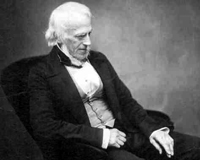
James DeCarle Sowerby, who described the first conulariid, Paraconularia subtilis in 1821.
Paraconularia subtilis, was first described as Conularia quadrisulcata in 1821 by James DeCarle Sowerby, a famous naturalist who studied molluscs.
The Natural History Museum houses one of the largest collections of conulariids in the world.
The collection contains more than 1100 conulariid specimens, including Sowerby’s original specimen of Paraconularia subtilis which comes from Carboniferous rocks in Cumbria, England.
-

Taxonomy
Discover more about the features of Paraconularia subtilis and its closest living relatives.
-

Distribution and ecology
Find out more about where and how Paraconularia subtilis lived.
-

Museum collection
Learn more about the discovery of Paraconularia subtilis and the Museum's collection of conulariids.
Distribution
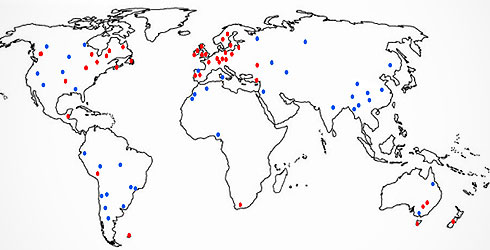
Map of places in the world from which fossils of conulariids have been collected. Red spots are localities represented by specimens in the Natural History Museum, blue in other museums.
Images
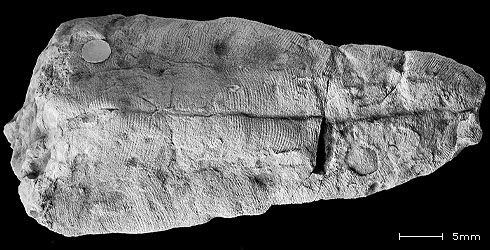
Sowerby’s original specimen of Paraconularia subtilis from Carboniferous rocks of Cumbria.

James DeCarle Sowerby, who described the first conulariid, Paraconularia subtilis (as Conularia quadrisulcata) in 1821.

Beautifully preserved example of Paraconularia quadrisulcata, a close relative of Paraconularia subtilis, collected from Carboniferous rocks in Glasgow, Scotland.

Compressed specimen of Paraconularia quadrisulcata showing the ribs.
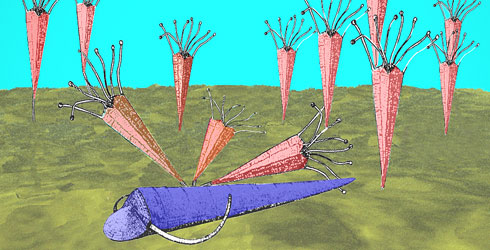
Life reconstruction of conulariids, some living attached to the shell of another extinct animal called a hyolith.
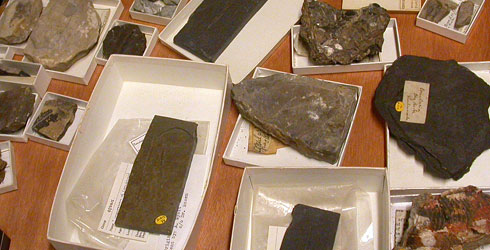
Example of a drawer of conulariid fossils in the Natural History Museum collections.
Author
Dr Consuelo Sendino
Curator, Invertebrates Curatorial Group, Department of Palaeontology.
